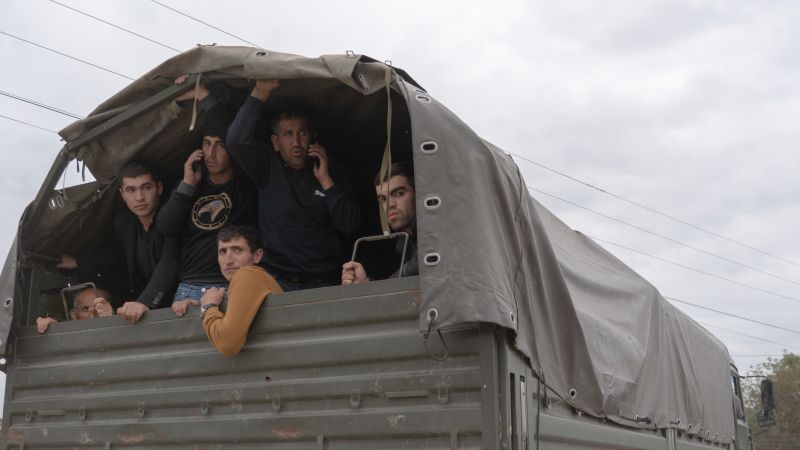The self-declared republic of Nagorno-Karabakh will cease to exist from next year after its president signed a decree dissolving state institutions following its defeat by Azerbaijan.
The Azerbaijani victory last week triggered a a huge exodus of ethnic Armenians living in Nagorno-Karabakh and marked the end of decades of conflict.
President Samvel Shahramanyan’s decree called for all institutions and organizations of the Republic of Artsakh – which is not recognized internationally – to dissolve by the start of next year.
“The Republic of Nagorno-Karabakh (Artsakh) ceases its existence,” read the decree, which was shared on Facebook by the Artsakh government.
Shahramanyan said the decision had been made “due to the current difficult military-political situation.”
Azerbaijan’s campaign lasted 24 hours, before both sides agreed to a Russia-brokered ceasefire which saw Karabakh’s armed forces disband. But the Azerbaijani presidency insisted that the Artsakh government also dissolve itself, warning that, if they did not do so, the offensive would continue “until the end.”
The decree called on Azerbaijan to observe the “free, unconstrained, and unhindered passing of the population of Nagorno-Karabakh, including the militants who laid down their weapons, with their property and transportation means through Lachin corridor.”
A sudden end
Nagorno-Karabakh lies within Azerbaijan’s borders but has for decades operated autonomously with a de facto government of its own. After Azerbaijan’s lightning offensive – which killed at least 200 people and injured many hundreds more – Baku said it had taken back control of the region, seemingly bringing to an end a conflict that has lasted more than a century.
Azerbaijan has long been clear about the choice the local Armenian population had to make: Stay and accept Azerbaijani citizenship, or leave. The majority of the population have voted with their feet, choosing to flee their ancestral home rather than submit to rule by Baku.
More than half of the population of Nagorno-Karabakh has fled for Armenia over the past week, after Azerbaijan lifted the blockade of the Lachin corridor – the only road connecting the enclave to Armenia – to allow people to leave.
Some 60,000 people had crossed the border into Armenia by Thursday morning, with many arriving in a “dire” condition, according to Samantha Power, United States Agency for International Development (USAID), in a visit to the border town of Kornidzor Tuesday.
Nagorno-Karabakh has been under blockade for 10 months, after Azerbaijan-backed activists established a military checkpoint on the Lachin corridor and prevented the import of food, medicine and fuel to the country. CNN spoke to residents of Stepanakert, the region’s capital, before the beginning of the offensive, who said they would have to wait in line for hours each day to receive their daily ration of bread.
“The military attacks of last week have made a dire situation even worse,” Power said Tuesday, adding that many of those who had arrived were suffering from “severe malnutrition,” according to doctors at the scene.



Pretty good video about the situation here if anybody is curious about the whole situation.
Here is an alternative Piped link(s):
here
Piped is a privacy-respecting open-source alternative frontend to YouTube.
I’m open-source; check me out at GitHub.